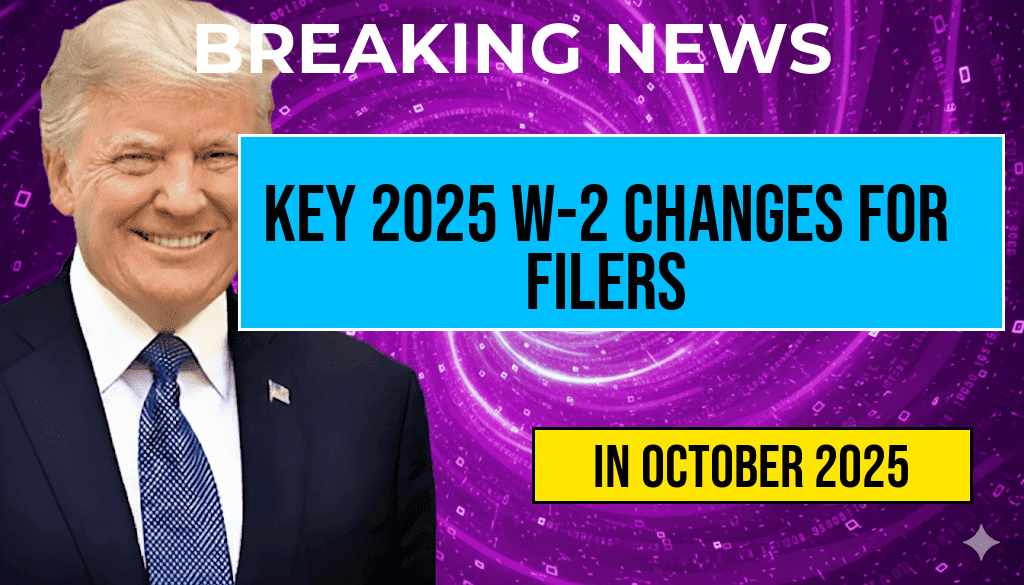As the tax season approaches, last-minute filers should prepare for significant updates to the 2025 W-2 forms. The Internal Revenue Service (IRS) has announced key changes to the boxes and codes used on these forms, which are essential for reporting income accurately. Understanding these modifications is crucial for both employers and employees to avoid potential errors that could lead to costly penalties or delays in tax refunds. This article outlines the upcoming changes, their implications, and best practices for ensuring compliance with the new requirements.
What to Expect in the 2025 W-2 Forms
The 2025 W-2 forms will introduce several notable adjustments in the way income and deductions are reported. These changes are designed to enhance clarity and improve the accuracy of information submitted to the IRS. Among the key updates are:
- New Codes for Benefits: Several boxes will feature new codes that will help delineate various types of employee benefits, such as health insurance and retirement contributions.
- Expanded Reporting Requirements: Employers may need to provide additional information regarding employee compensation, especially for those working remotely or in hybrid settings.
- Changes to Box 12 Codes: The codes in Box 12, which indicate various types of compensation and deductions, will see updates to ensure they accurately reflect current tax laws.
Implications for Employers
Employers are encouraged to familiarize themselves with these updates to avoid errors when filing W-2 forms. Incorrect filings can result in penalties ranging from $50 to $550 per form, depending on the severity and timing of the error. Furthermore, employers may face increased scrutiny from the IRS, leading to audits or additional compliance checks.
Best Practices for Compliance
To navigate the upcoming changes effectively, employers should consider the following steps:
- Update Payroll Systems: Ensure that payroll software is updated to reflect the new W-2 codes and boxes.
- Train Staff: Conduct training sessions for payroll and HR teams to understand the changes and how to apply them correctly.
- Review Employee Records: Verify that employee information is current, especially for those who have changed roles or compensation structures.
What Employees Should Know
Employees also need to stay informed about these changes, as they directly impact their tax returns. A clear understanding of how income and benefits are reported can help employees ensure that they receive accurate tax filings from their employers. Key points for employees include:
- Review Your W-2: Always check your W-2 for accuracy before filing your tax return. If you notice discrepancies, contact your employer immediately.
- Understand Your Benefits: Be aware of how your employer reports benefits on the W-2, as this may affect your taxable income.
- Consult Tax Professionals: If you are unsure about how these changes affect your tax situation, seek guidance from a tax professional.
How to Avoid Common Mistakes
To prevent errors during the filing process, both employers and employees can take proactive measures. Here are some strategies to consider:
- Double-Check Entries: Always verify that names, Social Security numbers, and income amounts are entered correctly on the W-2 forms.
- File Early: Don’t wait until the last minute to file your taxes. Early filing allows time to address any issues that may arise.
- Stay Updated: Regularly check the IRS website for updates on tax forms and regulations to remain compliant.
Resources for Further Information
Employers and employees can find additional information about the changes to the W-2 forms by visiting the following resources:
By staying informed about the upcoming changes to the W-2 forms, both employers and employees can mitigate the risks associated with filing errors and ensure a smoother tax season ahead.
Frequently Asked Questions
What are the upcoming changes to the 2025 W-2 boxes and codes?
The 2025 W-2 forms will feature updated boxes and codes to improve clarity and compliance. It’s essential for last-minute filers to be aware of these changes to avoid costly errors.
Why is it important for last-minute filers to understand these changes?
Last-minute filers may rush through their tax filings, increasing the risk of mistakes. Understanding the new W-2 boxes and codes can help ensure accurate submissions and prevent potential penalties.
How can I stay updated on the changes to the W-2 form?
You can stay informed by checking the IRS website or consulting with a tax professional. Additionally, subscribing to relevant newsletters can provide timely updates on the latest changes.
What common errors should I avoid when filing my W-2?
Common errors include incorrect employee information, missing or incorrect codes, and failure to report all necessary income. Double-checking your form can help catch these mistakes before submission.
Where can I find resources to help with my W-2 filing?
Resources are available on the IRS website, tax preparation software, and through tax assistance programs. These can provide guidance on how to correctly fill out the updated W-2 forms.





